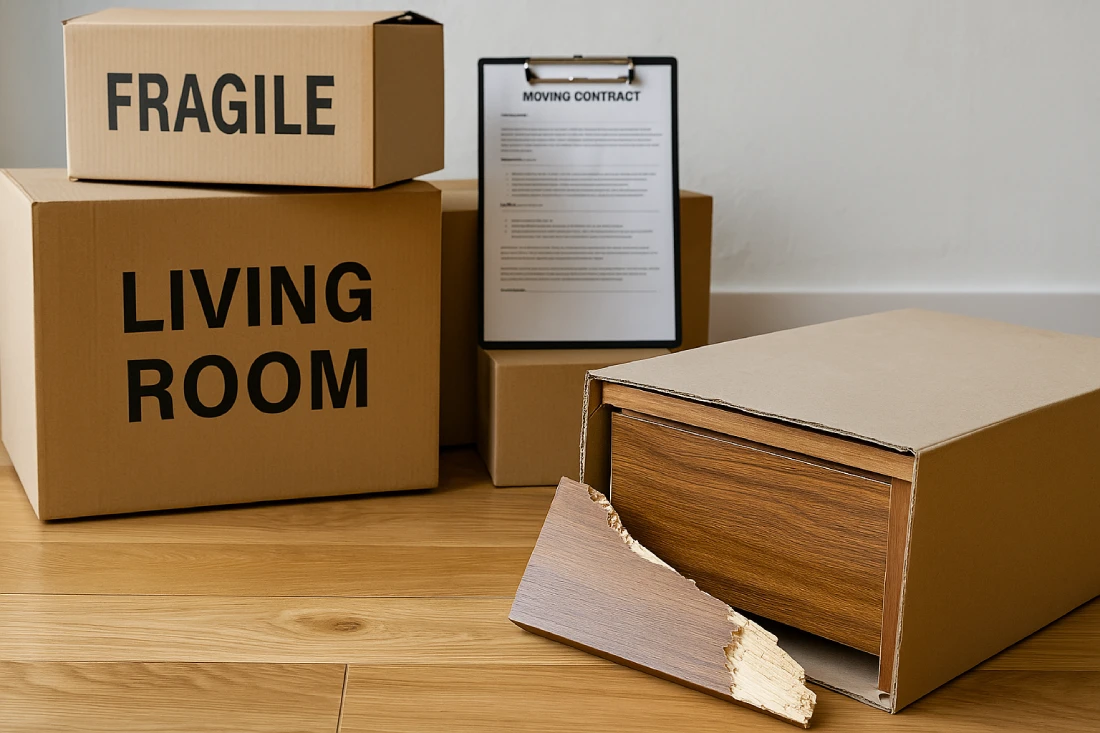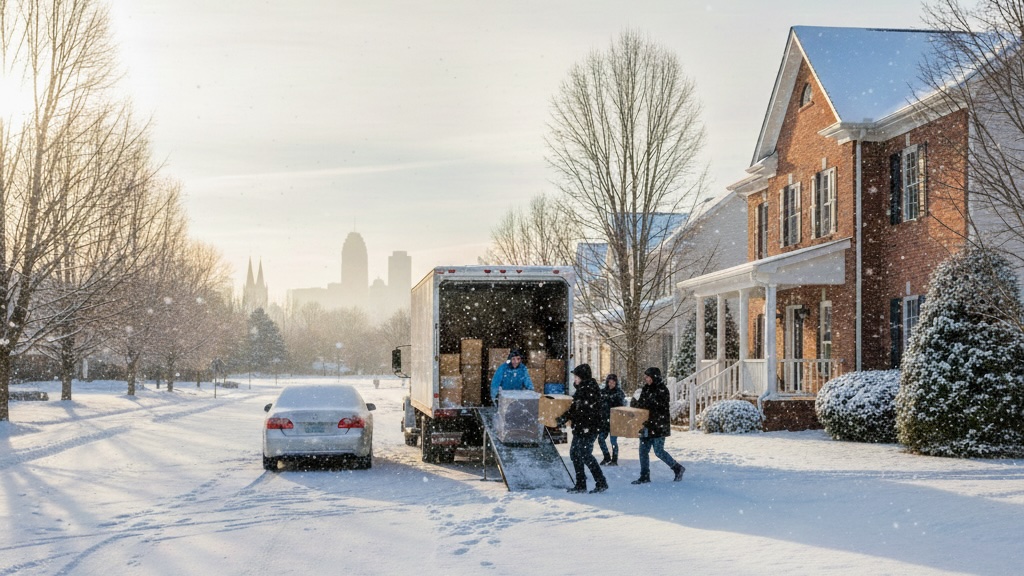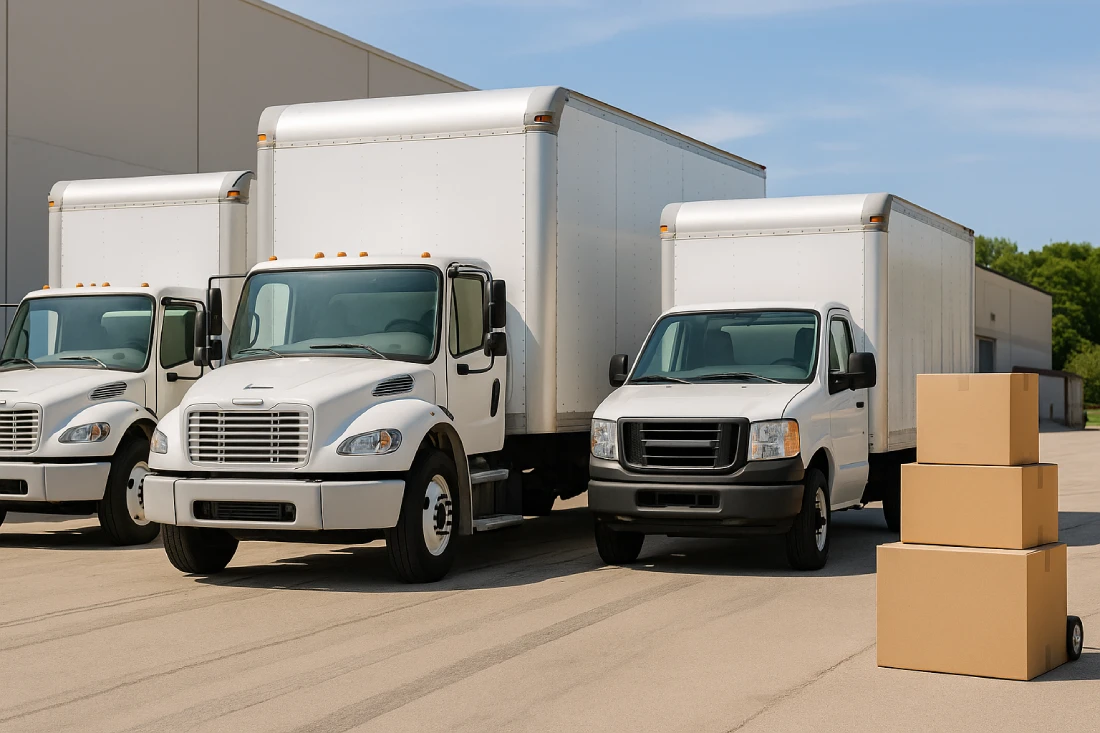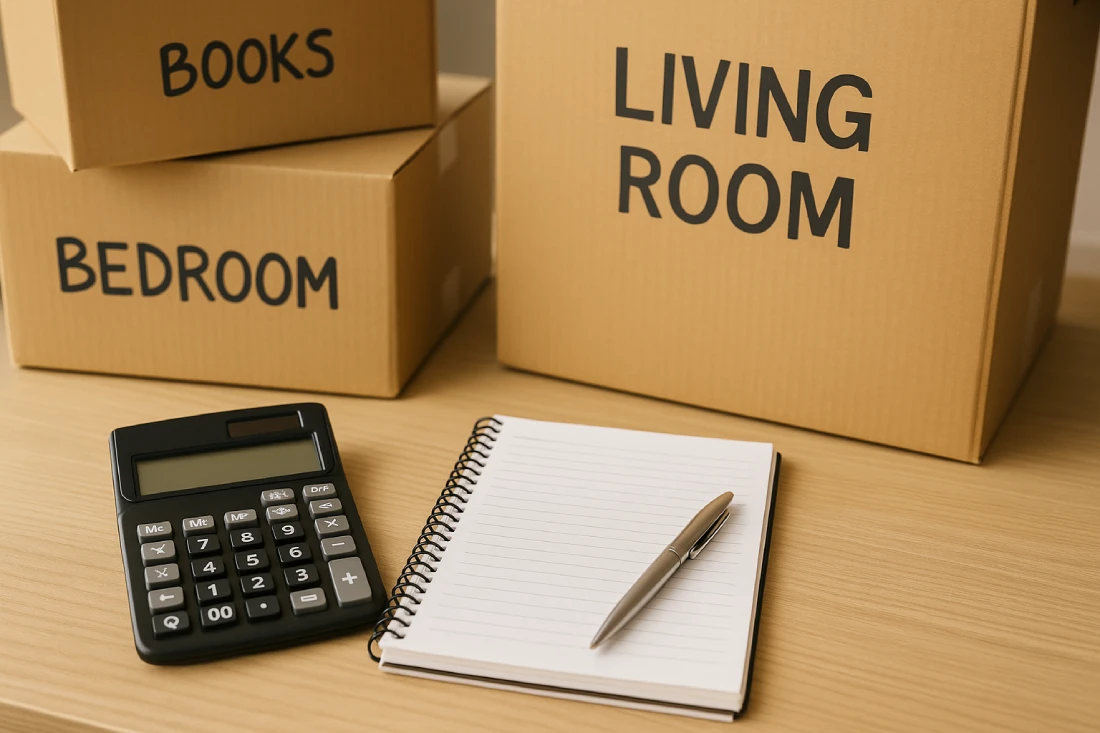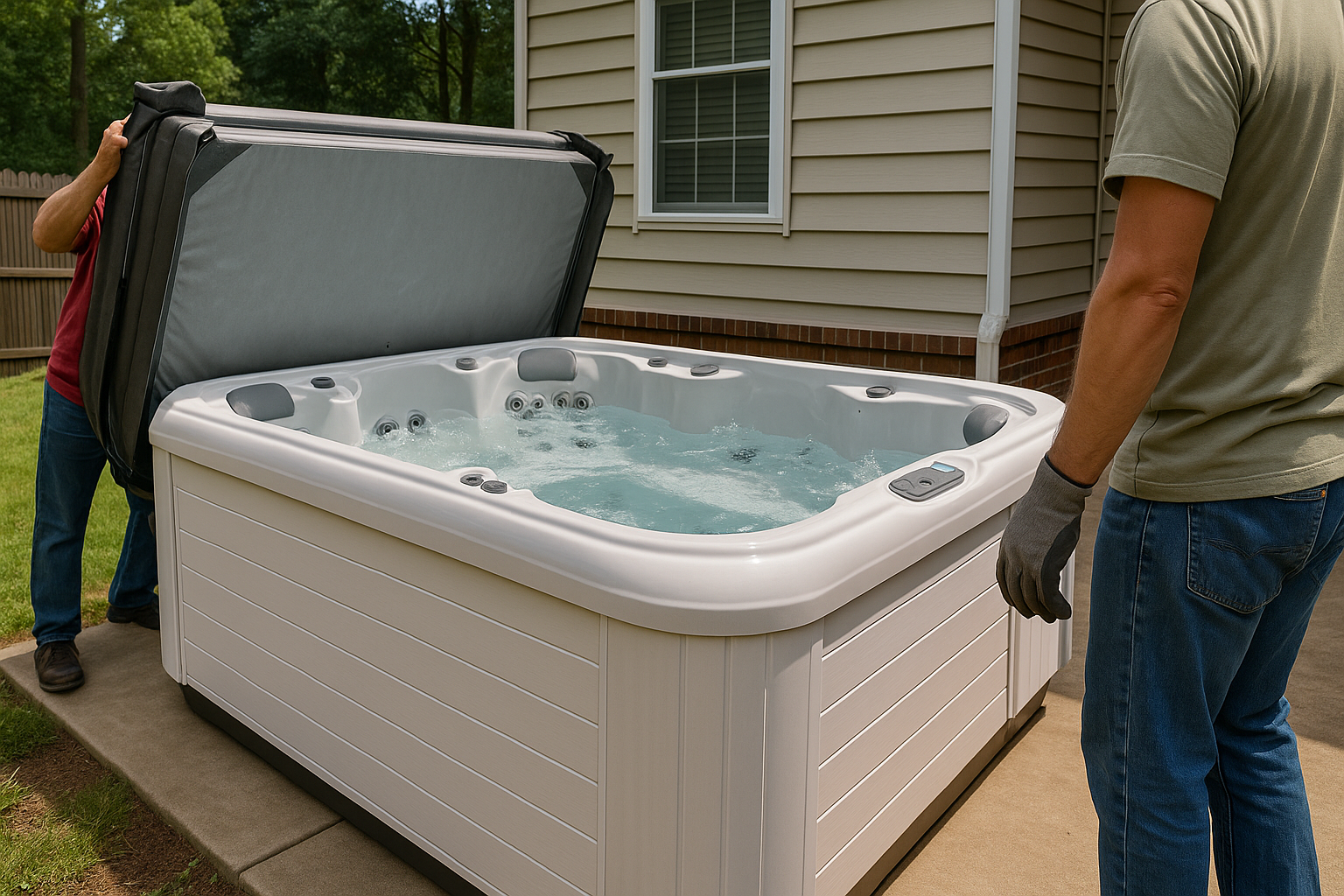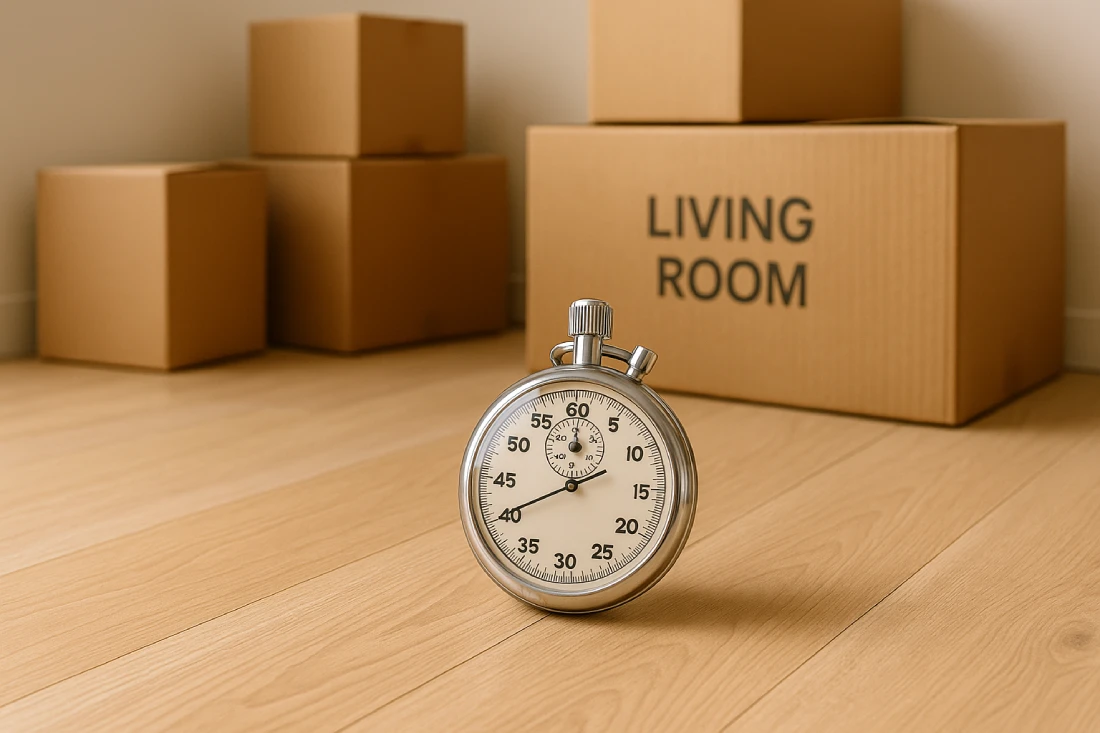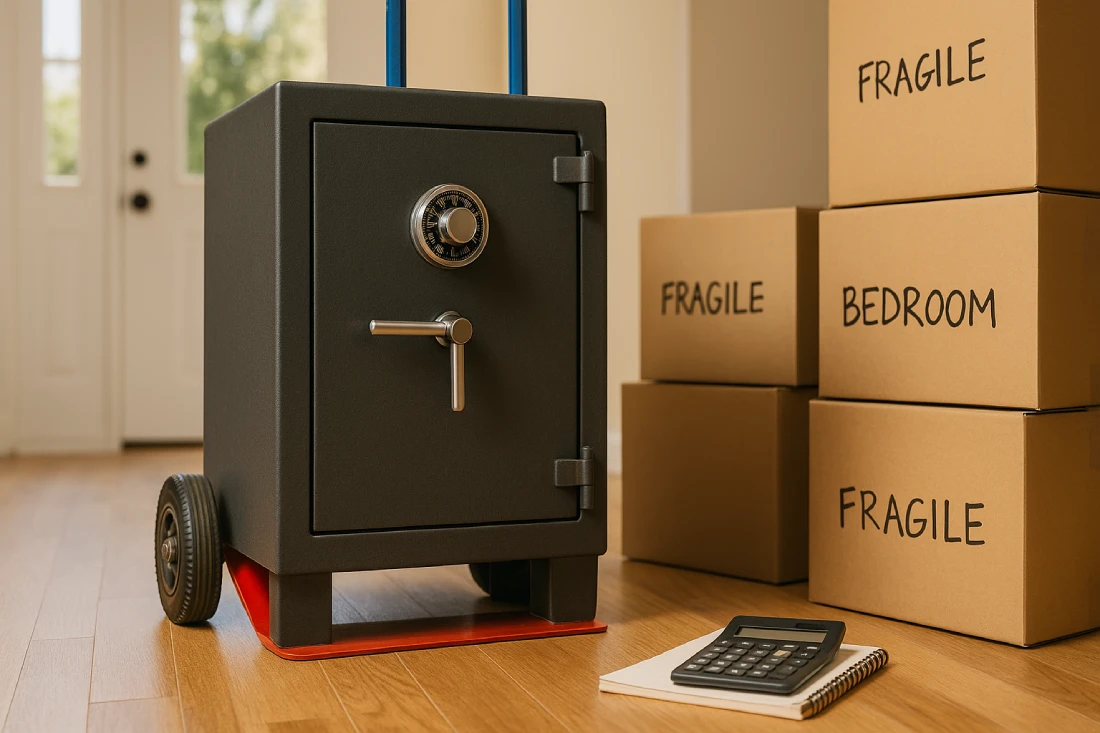Moving to another state is one of life's biggest changes. Whether you're relocating for a new job, seeking a better quality of life, moving closer to family, or simply craving a fresh start, an interstate move requires careful planning and execution. This article will walk you through every step of the process, from initial research to settling into your new home, to help you have a smooth and stress-free relocation.
Common Reasons to Relocate
People relocate to other states for many reasons. Career opportunities like new job offers, promotions, or stronger job markets often drive moves. Financial factors matter too, including lower housing costs, reduced taxes, and overall affordability.
Family considerations, such as being closer to loved ones or following a partner, play a major role. Many seek better climate and lifestyle options, from outdoor activities to urban or rural balance. Retirees often move for favorable tax laws and amenities, while families may relocate for access to better schools or college opportunities.
Signs It's Time for a Change
Take time to weigh the pros and cons, discuss with family members, and make sure this decision aligns with your long-term goals. Several signs suggest an interstate move might be right for you:
- You feel stuck with limited growth opportunities in your current location.
- The cost of living is straining your finances.
- You're craving a lifestyle change that your current state can't provide.
- Family circumstances require you to be elsewhere.
- You've thoroughly researched and feel confident about the move.
Step 1: Research Your New State
Thorough research is the foundation of a successful interstate move. Before committing to a new state, understand how its cost of living, job market, housing options, and tax structure compare to your current situation. These differences can significantly impact your finances and quality of life.
Getting familiar with local schools, healthcare facilities, climate patterns, and community culture will help you set realistic expectations and avoid costly mistakes. Visiting your prospective state in person, if possible, provides invaluable firsthand insights that online research alone cannot offer.
Key Factors to Research
- Cost of Living: Compare housing costs, utilities, groceries, transportation, and healthcare. Use online calculators to see how your current salary translates to purchasing power in the new state.
- Job Market: Research employment opportunities in your field, average salaries, unemployment rates, and major industries. LinkedIn, Indeed, and local job boards are valuable resources.
- Housing Market: Investigate rental prices, home values, property taxes, and neighborhood trends. Consider whether you'll rent or buy, and what type of housing fits your budget.
- Taxes: Each state has different income tax rates, sales tax, property tax, and other fees. Some states have no income tax, which can significantly impact your take-home pay.
- Schools and Education: If you have children, research school districts, ratings, extracurricular activities, and college options.
- Climate and Geography: Consider weather patterns, natural disaster risks, and how the climate will affect your lifestyle and health.
- Healthcare: Identify quality hospitals, specialists, and healthcare coverage options in your new state.
- Culture and Lifestyle: Research local culture, recreational activities, dining, entertainment, and community vibe to make sure it matches your preferences.
Visit and Scout Neighborhoods
If possible, visit your prospective new state before committing to the move. Spend time in different neighborhoods, talk to locals, visit potential workplaces and schools, and get a feel for daily life. This firsthand experience is invaluable in making your final decision.
It validates online research, reveals hidden details like noise levels and community vibe, tests your daily routine and commute, builds local connections, and helps you assess whether you'll truly feel at home. This prevents costly mistakes and promotes long-term satisfaction.
Step 2: Create a Moving Budget
Understanding the financial commitment of an interstate move is important for proper planning. Moving costs vary significantly based on your chosen method, distance, and service level. For a detailed breakdown of professional moving expenses and options, see our complete guide on how much it costs to hire a moving company.
Typical Moving Costs
- Professional Moving Services: Full-service movers typically cost $2,000-$9,000+, depending on distance and volume.
- DIY Moving Truck Rental: $1,000-$3,000+, including truck rental, gas, tolls, and insurance.
- Portable Storage Containers: Companies like PODS charge $3,000-$7,500 for long-distance moves.
- Packing Supplies: Boxes, tape, bubble wrap, and materials can cost $200-$500.
- Housing Deposits: First and last month's rent plus security deposit can total 2-3 months of rent upfront.
- Travel Expenses: Gas, hotels, meals, and flights add up quickly.
- Utility Deposits and Setup Fees: New utility connections may require deposits.
- Emergency Fund: Set aside 3-6 months of living expenses for unexpected costs or employment delays.
Budgeting Tips
- Get multiple quotes from moving companies and compare services.
- Move during off-peak times (fall and winter) for better rates.
- Declutter to reduce the volume of items to move.
- Track all expenses in a spreadsheet or budgeting app.
- Build in a 10-20% buffer for unexpected costs.
Step 3: Secure Housing and Employment
One of the most important aspects of relocating to another state is making sure you have both a place to live and a source of income. These two elements provide the foundation for a successful transition and significantly reduce the stress and uncertainty of moving.
Securing a Job Before You Move
Ideally, you should have employment lined up before relocating. This provides financial security and helps establish your new life with confidence.
- Update your resume and cover letter to reflect your planned relocation date and new location.
- Leverage your professional network. Reach out to contacts in your target state for referrals and opportunities.
- Use job boards like LinkedIn, Indeed, and industry-specific platforms to search for positions.
- Attend virtual interviews and be transparent about your timeline and commitment to moving.
- Research major employers and industries in your new state to target your search effectively.
Moving Without a Job
If you need to move before securing employment, proper preparation is important.
- Save 3-6 months of living expenses to cover the gap between moving and finding work.
- Research the local job market thoroughly, including average salaries, unemployment rates, and in-demand skills.
- Consider temporary, contract, or remote work to generate income during your job search.
- Network actively online before you move and in person once you arrive.
- Join local professional associations and attend industry events to build connections.
- Be prepared to explain your move positively to potential employers, emphasizing your commitment to the area.
Securing Housing: Renting vs. Buying
Deciding where and how to live in your new state depends on your financial situation, familiarity with the area, and long-term plans. Renting is often the best choice for newcomers, as it provides flexibility to explore neighborhoods, requires less upfront capital than buying, and allows you to test different areas for 6-12 months before committing to a purchase. If you're confident about your location and plan to stay long-term, buying a home may make sense. Just be sure to research mortgage rates, property taxes, insurance, HOA fees, and work with a local real estate agent who understands state-specific requirements. Whether renting or buying, factor in closing costs or deposits, moving expenses, and potential renovation needs to make sure your housing choice aligns with your budget and lifestyle goals.
Temporary Housing Solutions
If you can't secure permanent housing before your move, temporary options can bridge the gap while you search for the right home. Short-term rentals like furnished apartments or Airbnb accommodations (1-3 months), extended-stay hotels with kitchenettes, corporate housing for professionals, staying with friends or family, and month-to-month leases all provide flexible solutions.
These temporary arrangements give you valuable time to visit neighborhoods in person, attend open houses, and make an informed decision about where you want to live permanently.
Step 4: Plan Your Move
Planning how you'll physically move your belongings is important for a smooth transition, and understanding your options can save you both money and stress. Each moving method (DIY, full-service professional, or a hybrid approach) comes with distinct advantages, costs, and logistical considerations that impact everything from your budget to your physical safety.
For a detailed comparison of these options and to determine which approach best fits your situation, see our comprehensive guide on moving yourself vs. hiring movers.
- Full-Service Movers: Professionals handle packing, loading, transport, and unloading. Most expensive but least stressful option. Get quotes from at least three companies, check reviews and licensing, and verify insurance coverage.
- DIY Moving Truck: You rent a truck and handle all packing, loading, driving, and unloading. Most affordable but physically demanding. Reserve your truck well in advance, especially during peak moving season.
- Portable Storage Containers: A container is delivered to your home, you pack and load it, and the company transports it to your new location. Offers flexibility and convenience at a mid-range price.
- Mixed Approach: Hire movers for loading and unloading while you handle the driving, or pack yourself and hire movers for transport.
Decluttering and Downsizing
Moving is the perfect opportunity to declutter and reduce the volume of items you need to transport. This, along with applying proven moving hacks, will save money and make unpacking easier.
- Sort items into keep, donate, sell, and trash categories.
- Host a garage sale or sell items online through Facebook Marketplace, Craigslist, or eBay.
- Donate gently used items to charities like Goodwill or the Salvation Army.
- Dispose of hazardous materials properly (paint, chemicals, batteries).
- Digitize important documents and photos to reduce paper clutter.
Gathering Packing Supplies and Starting Early
Start packing non-essential items 6-8 weeks before your move date. Gather boxes, packing tape, bubble wrap, packing paper, markers, and labels.
- Pack room by room and label boxes clearly with contents and destination room.
- Pack heavy items in small boxes and light items in large boxes.
- Wrap fragile items carefully and mark boxes as "fragile."
- Keep an essentials box with items you'll need immediately upon arrival.
- Take photos of the electronics setup for easy reconnection.
Step 5: Legal and Administrative Requirements
Moving to another state involves several legal and administrative tasks that must be completed to establish residency and remain compliant with state laws.
Update Your Address
- USPS: Set up mail forwarding online or at your local post office at least 2 weeks before moving.
- IRS: Update your address with the IRS using Form 8822.
- Banks and Credit Cards: Notify all financial institutions of your address change.
- Insurance Providers: Update home, auto, health, and life insurance with your new address.
- Subscriptions and Memberships: Update magazines, streaming services, gym memberships, etc.
- Employer and HR: Notify your employer for payroll and tax purposes.
Driver's License and Vehicle Registration
Most states require you to obtain a new driver's license and register your vehicle within 10-30 days of establishing residency. Check your new state's DMV website for specific requirements and deadlines.
Typically, you'll need to provide proof of residency (utility bill, lease agreement), proof of identity (birth certificate, passport), your current driver's license, and payment for fees. You may also need to pass a vision test or written/driving exam, depending on the state.
For vehicle registration, bring your current registration, proof of ownership (title), proof of insurance, and payment for registration fees. Some states require vehicle inspections or emissions tests.
Voter Registration
Register to vote in your new state through your state's election website, by mail, or at your local DMV. Update your registration before the upcoming elections to make sure your voice is heard.
School Enrollment
If you have school-age children, contact the school district in your new area to understand enrollment procedures, required documentation (immunization records, transcripts, proof of residency), and registration deadlines.
Pet Registration and Regulations
Some states and municipalities require pet registration or licenses. Research local leash laws, breed restrictions, and vaccination requirements. Update your pet's microchip information with your new address.
Step 6: Healthcare and Insurance
Making sure you have continuous healthcare coverage and access to medical services is important when moving to another state.
Transferring Health Insurance
If you have employer-sponsored insurance, notify your HR department of your move. Your coverage may change depending on the insurer's network in your new state. If you have Marketplace insurance, report your move to the Health Insurance Marketplace within 60 days.
This qualifies as a special enrollment period, allowing you to change or update your plan. For Medicare or Medicaid recipients, contact your plan administrator to understand coverage in your new state and make necessary changes.
Transferring Medical Records and Prescriptions
- Request copies of medical records from your current doctors and specialists.
- Research and establish relationships with new healthcare providers in your new state.
- Transfer prescriptions to a pharmacy in your new location.
- Make sure you have an adequate supply of medications during the transition.
- Update health insurance information with new providers.
Finding New Providers
Use your insurance company's provider directory, online reviews, and local recommendations to find new doctors, dentists, specialists, and veterinarians. Schedule appointments shortly after arriving to maintain continuity of care.
Step 7: Moving Day and Arrival
Moving day is the culmination of weeks or months of planning, and proper execution makes for a smooth transition to your new state. Whether you're coordinating with professional movers or handling a DIY move, staying organized and completing final tasks systematically will minimize stress and prevent costly mistakes.
Final Checks Before Leaving
- Do a final walkthrough of your home to make sure nothing is left behind.
- Check all closets, cabinets, attic, basement, and garage.
- Turn off lights, unplug appliances, and lock all doors and windows.
- Take photos of your empty home for documentation.
- Return keys to the landlord or leave them as arranged.
- Confirm your forwarding address and contact information with movers.
Travel to Your New State
If driving, plan your route with rest stops and overnight accommodations. Keep important documents, valuables, and essentials with you rather than in the moving truck. Stay hydrated, take breaks, and drive safely.
If flying, coordinate arrival times with your moving company and arrange for temporary lodging if needed.
Unpacking and Setting Up Utilities
Upon arrival, prioritize setting up important utilities like electricity, water, gas, internet, and trash service. Contact providers in advance to schedule installation or activation for your move-in date.
Start unpacking essentials first: bedding, toiletries, kitchen basics, and clothing. Then work room by room, focusing on high-priority areas like bedrooms, bathrooms, and the kitchen.
Inspect your belongings for any damage during transit and document issues for insurance claims if necessary.
Registering for Local Services
- Visit the DMV to get your new driver's license and register your vehicle.
- Register to vote at your local election office or online.
- Enroll children in school and arrange transportation.
- Set up local bank accounts if your current bank doesn't have branches in your new state.
- Update your address with all relevant parties.
Step 8: Settling In After Moving to Another State
Take time to explore your neighborhood and the surrounding areas. Visit local restaurants, coffee shops, parks, libraries, and community centers. Attend local events, farmers’ markets, and festivals to get a feel for the culture and meet people.
Get familiar with grocery stores, pharmacies, gas stations, hospitals, and other important services nearby.
Build a Support Network
Building connections in your new state is important for emotional well-being and practical support.
- Join local clubs, sports leagues, or hobby groups that match your interests.
- Attend religious services, community meetings, or volunteer opportunities.
- Use apps like Meetup or Bumble BFF to find like-minded people.
- Introduce yourself to neighbors and attend neighborhood gatherings.
- Stay connected with friends and family in your old state through calls and video chats.
Adjusting Emotionally and Socially
It's normal to feel excitement, homesickness, anxiety, or loneliness after a big move. Give yourself time to adjust and be patient with the transition. Remember, building a life in a new state takes time. Be open to new experiences, stay curious, and embrace the adventure.
- Keep routines from your old life to create a sense of stability.
- Stay positive and focus on the opportunities your new state offers.
- Get professional support if you're struggling with the adjustment.
- Celebrate small milestones in your new life.
Moving to Another State the Right Way
Moving to another state is a major life change that needs thorough planning, organization, and adaptability. By following this guide, you'll be ready to handle every part of your interstate move, from initial research and budgeting to settling into your new community.
Remember to give yourself plenty of time to prepare, stay organized with checklists and timelines, budget carefully for all expenses, complete legal requirements on time, and keep a positive attitude throughout the process.
Your new state holds exciting opportunities for personal growth, career advancement, and new experiences. Embrace the adventure, stay flexible, and trust that with proper preparation, your move will be a success.
Final Moving Checklist
- Research your new state thoroughly (cost of living, job market, housing, schools).
- Create a detailed moving budget and save for expenses.
- Get housing and employment before moving, if possible.
- Choose a moving method and book services early.
- Declutter and downsize belongings.
- Start packing 6-8 weeks in advance.
- Update your address with USPS, IRS, banks, and insurance providers.
- Transfer or set up new health insurance and medical care.
- Cancel or transfer utilities and services in your old state.
- Do a final walkthrough before leaving.
- When you arrive, set up utilities and unpack what you need right away.
- Get a new driver's license and register your vehicle within the required timeframe.
- Register to vote and enroll children in school.
- Explore your new community and build connections.
- Be patient with yourself as you adjust to your new life.
FAQs About Moving to Another State
How long does it take to move to another state?
The timeline varies depending on your preparation and circumstances, but 2-3 months from decision to move-in is typical. This includes researching, getting housing and employment, planning the move, and completing legal requirements.
Can I move to another state without a job?
Yes, but it takes careful financial planning. Save at least 3-6 months of living expenses, research the job market thoroughly, consider remote or temporary work, and be prepared for the challenges of job hunting in a new location.
What is the cheapest way to move to another state?
The cheapest option is usually a DIY move where you rent a truck and handle all packing, loading, and driving yourself. Decluttering to reduce volume, moving during off-peak times, and getting free boxes can cut costs even more. Learning how to pack books for a move and other items that need special care will also save you money and reduce damage costs.
Do I need to pay taxes in both my old and new states?
If you move mid-year, you may need to file part-year resident tax returns in both states, reporting income earned in each state. Check if your states have reciprocity agreements that simplify this process.
What should I do with my old driver's license?
Most states require you to turn in your old driver's license when getting a new one. Some states will punch a hole in it or return it to you as a souvenir, while others will destroy it.
Should I hire professional movers or do it myself?
This depends on your budget, physical ability, time constraints, and the volume of belongings. Professional movers are more expensive but handle the heavy lifting and logistics. DIY moves save money but need significant time, effort, and planning.
How do I find housing in a new state?
Use online platforms like Zillow, Craigslist, or local real estate websites. Consider working with a real estate agent who knows the area. If possible, visit in person to view properties before committing. Read reviews of landlords and property management companies.
Can I Move With Plants Across States?
Yes, but check your destination state's agricultural regulations first, as many states require inspection certificates or ban certain species to prevent pest spread. Visit your state's Department of Agriculture website or see our guide on packing plants for moving for detailed requirements and packing instructions.
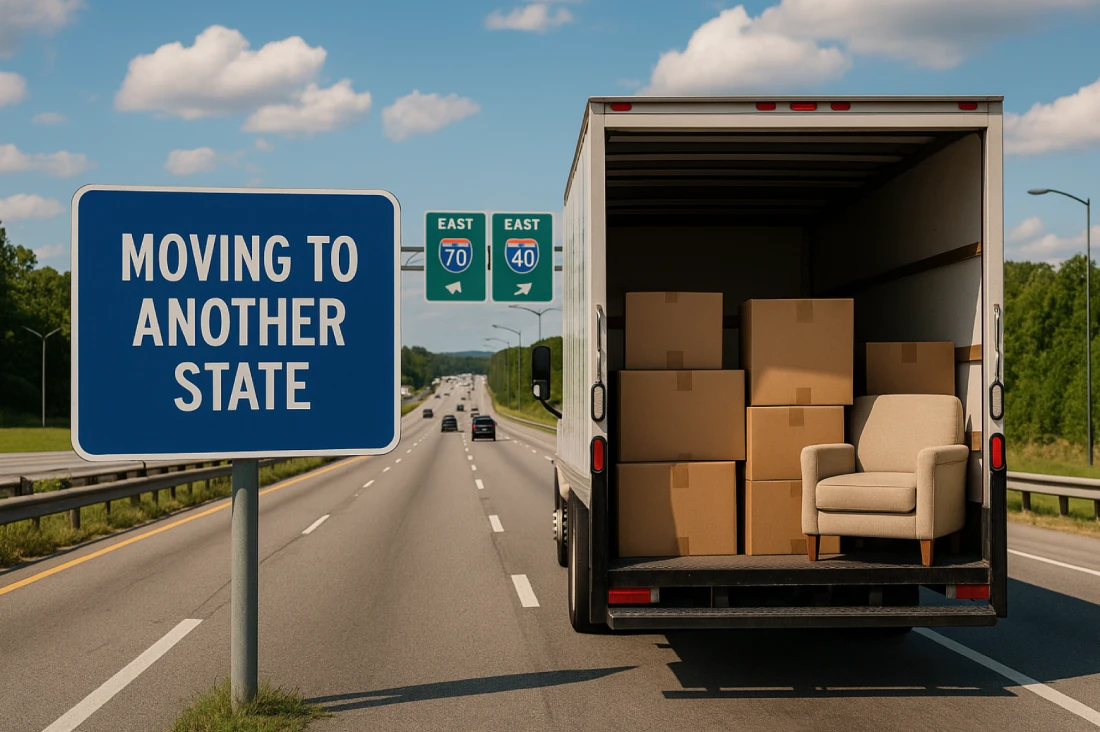
.webp)



